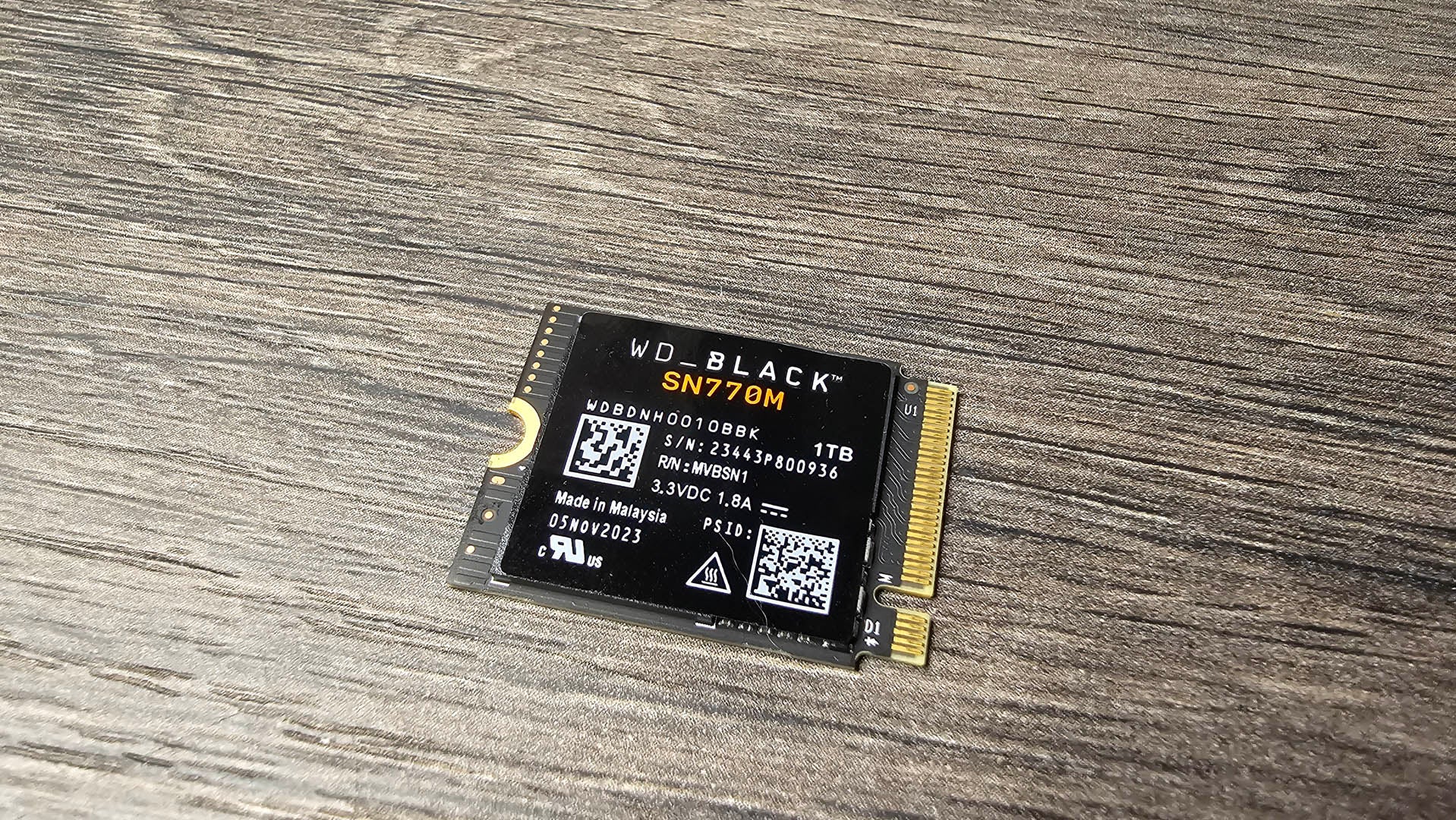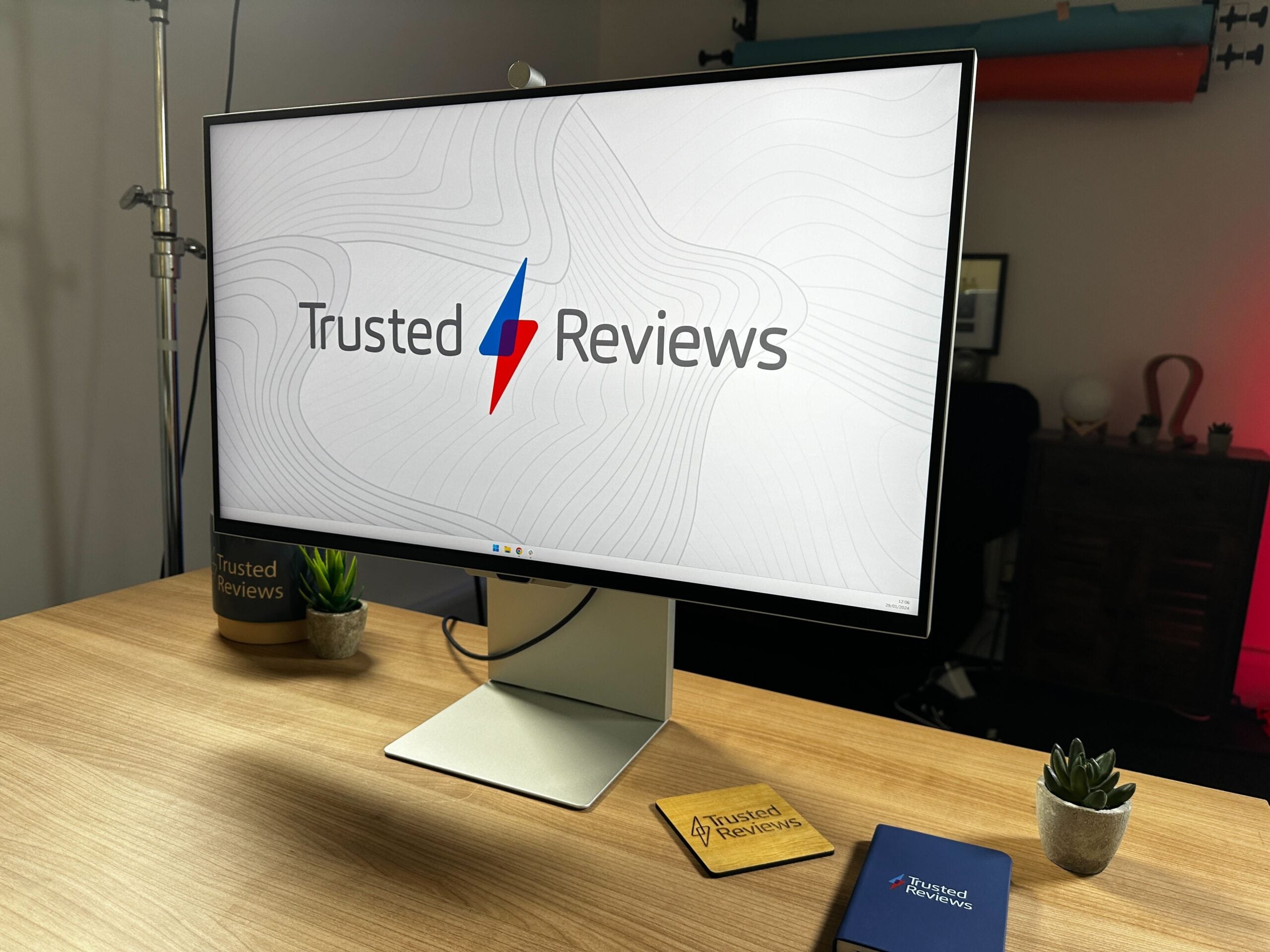Gigabyte Aorus 17H Review
A top-notch eSports laptop
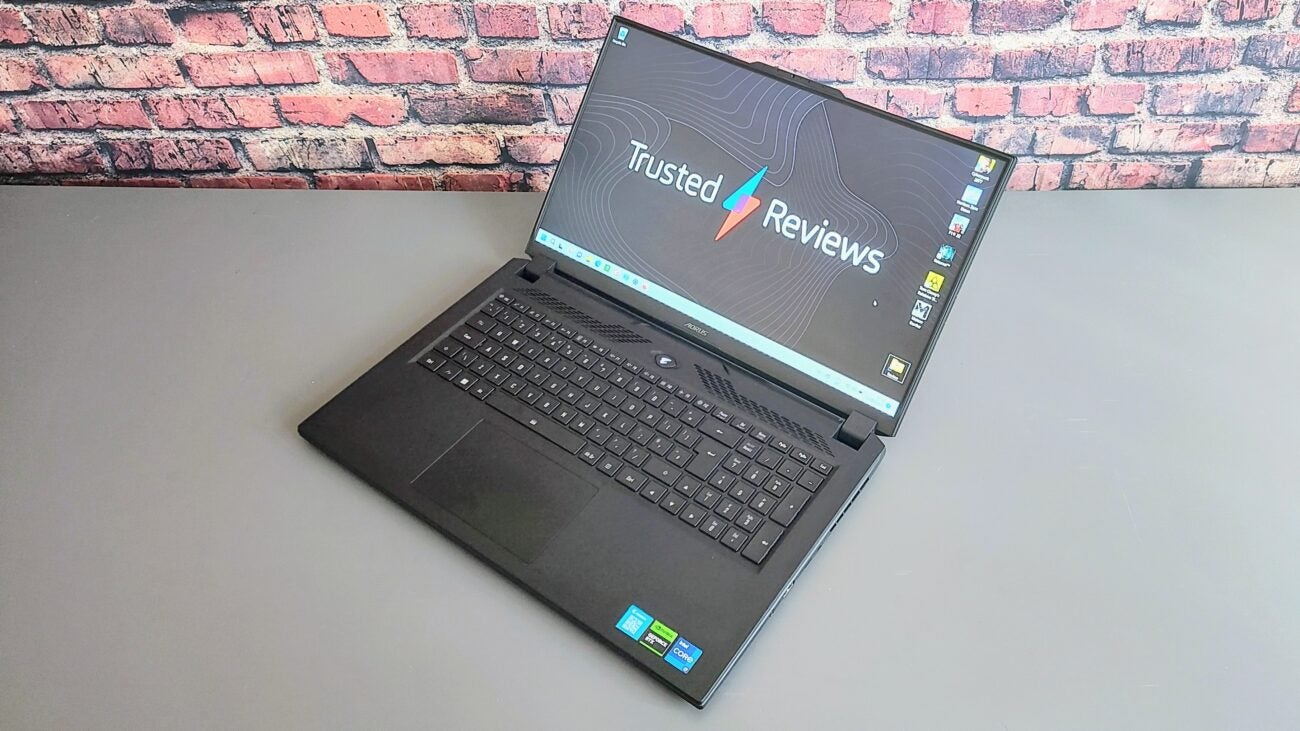
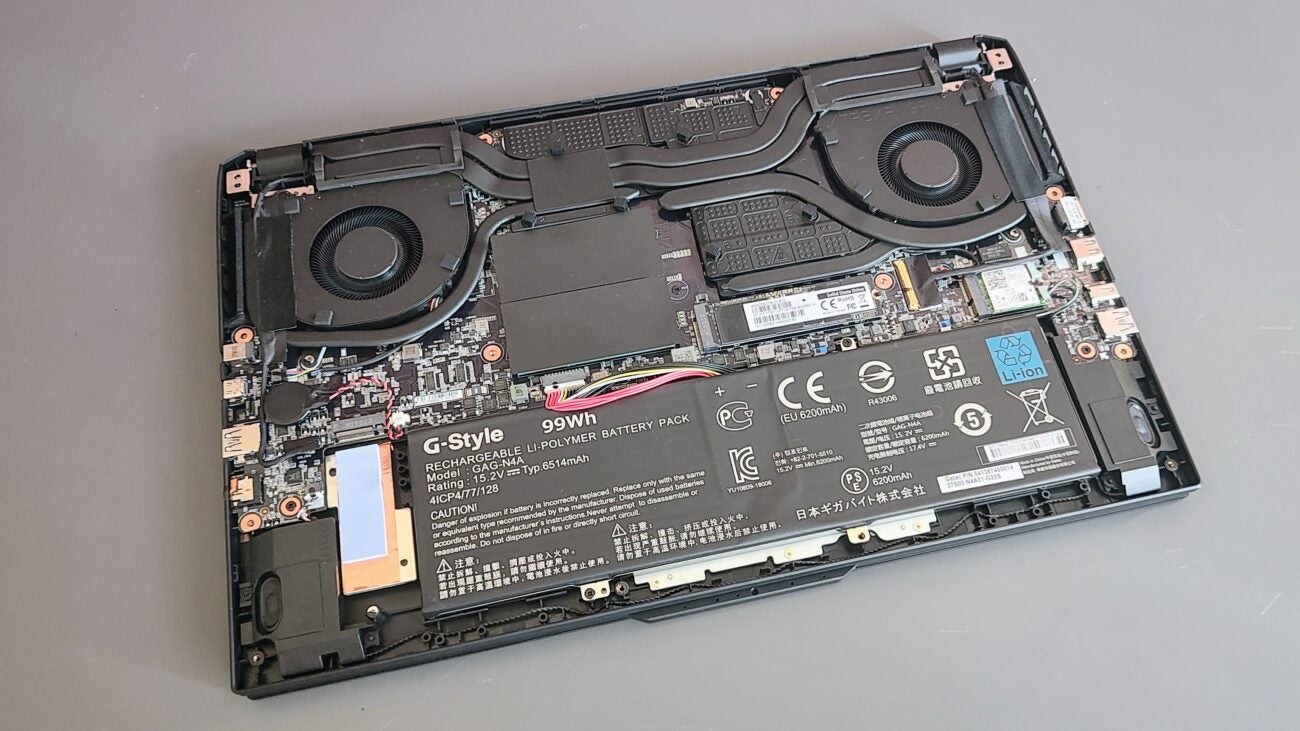
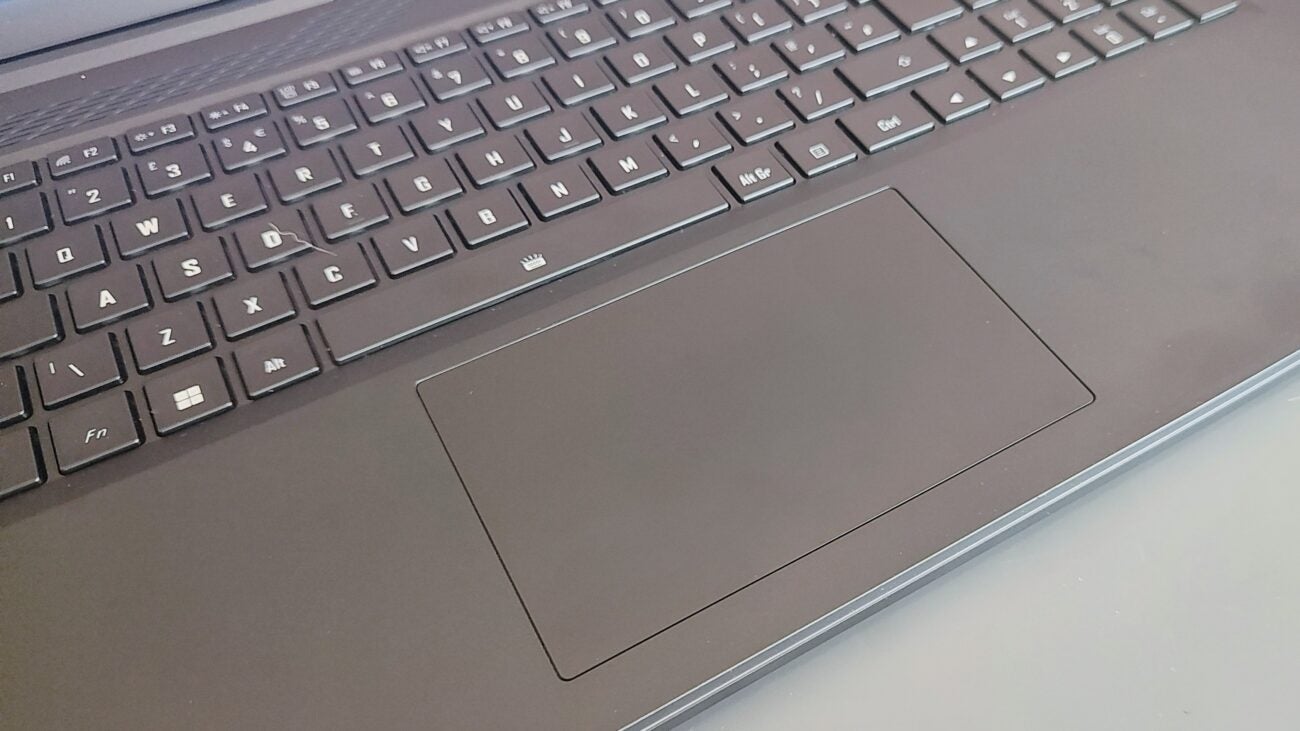
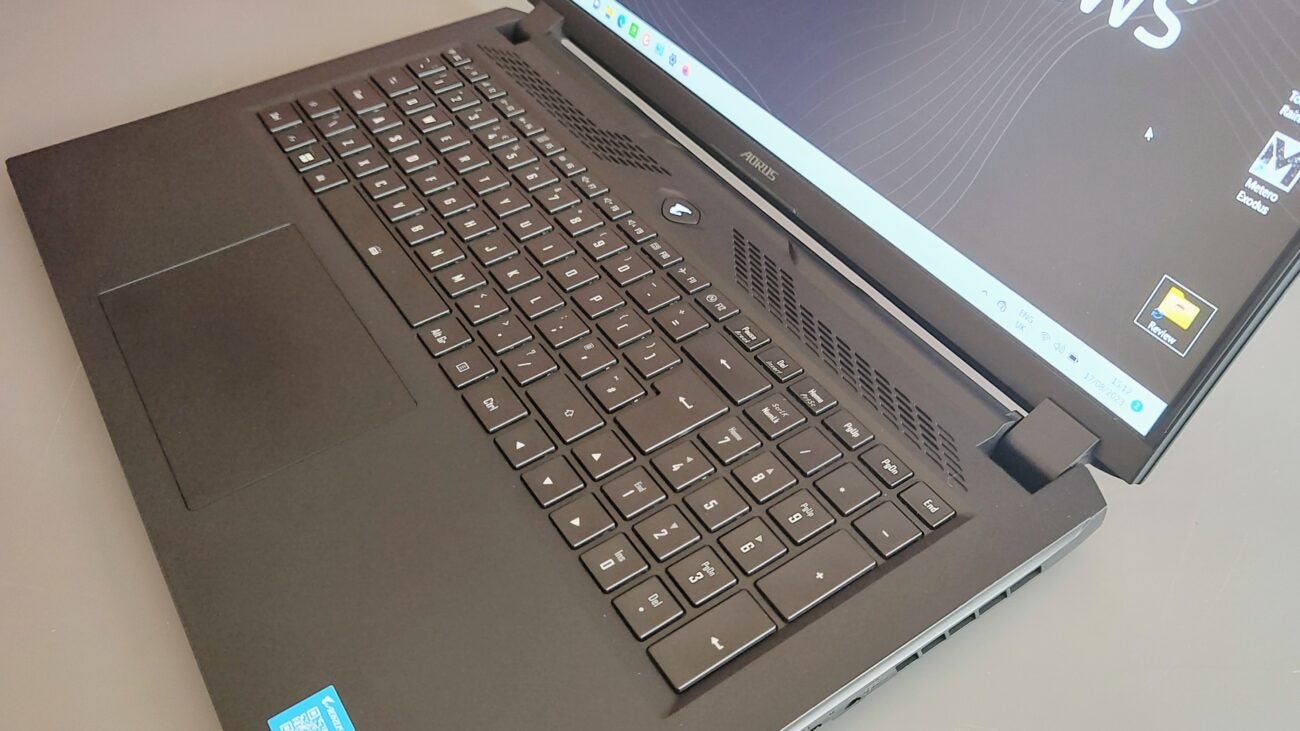
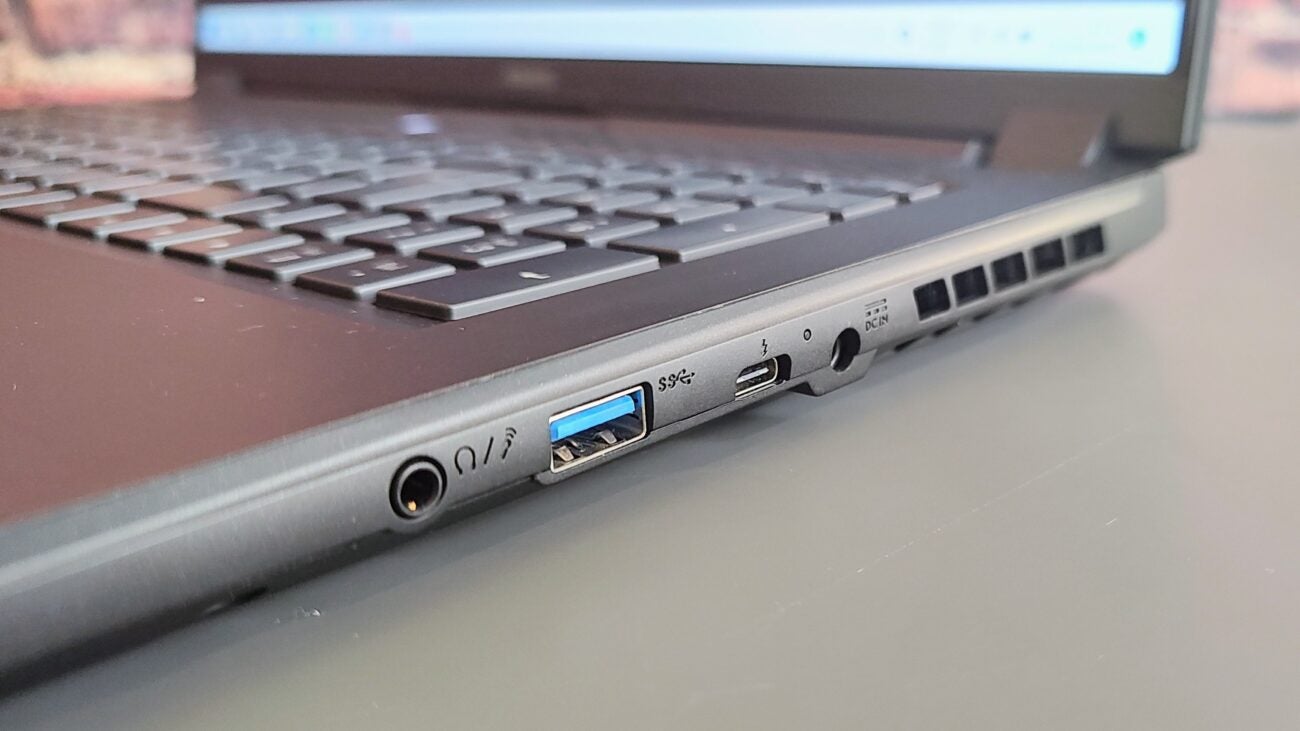
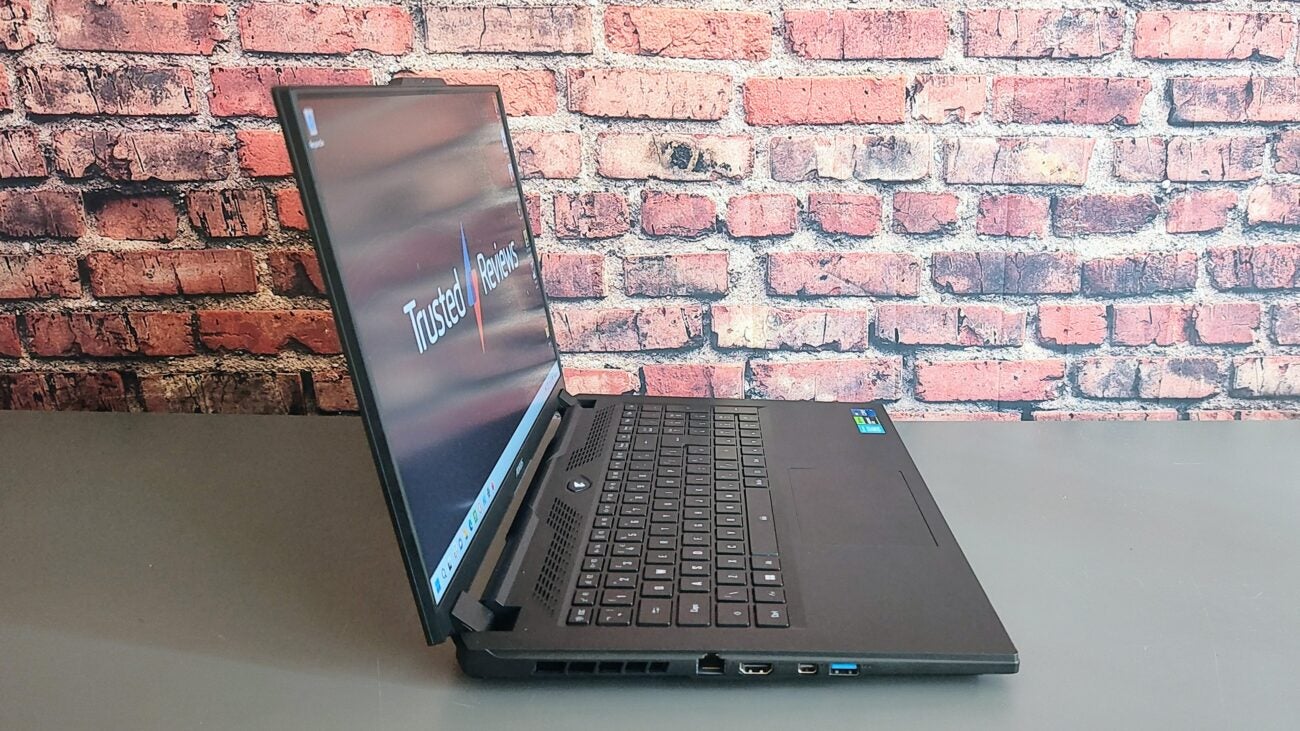
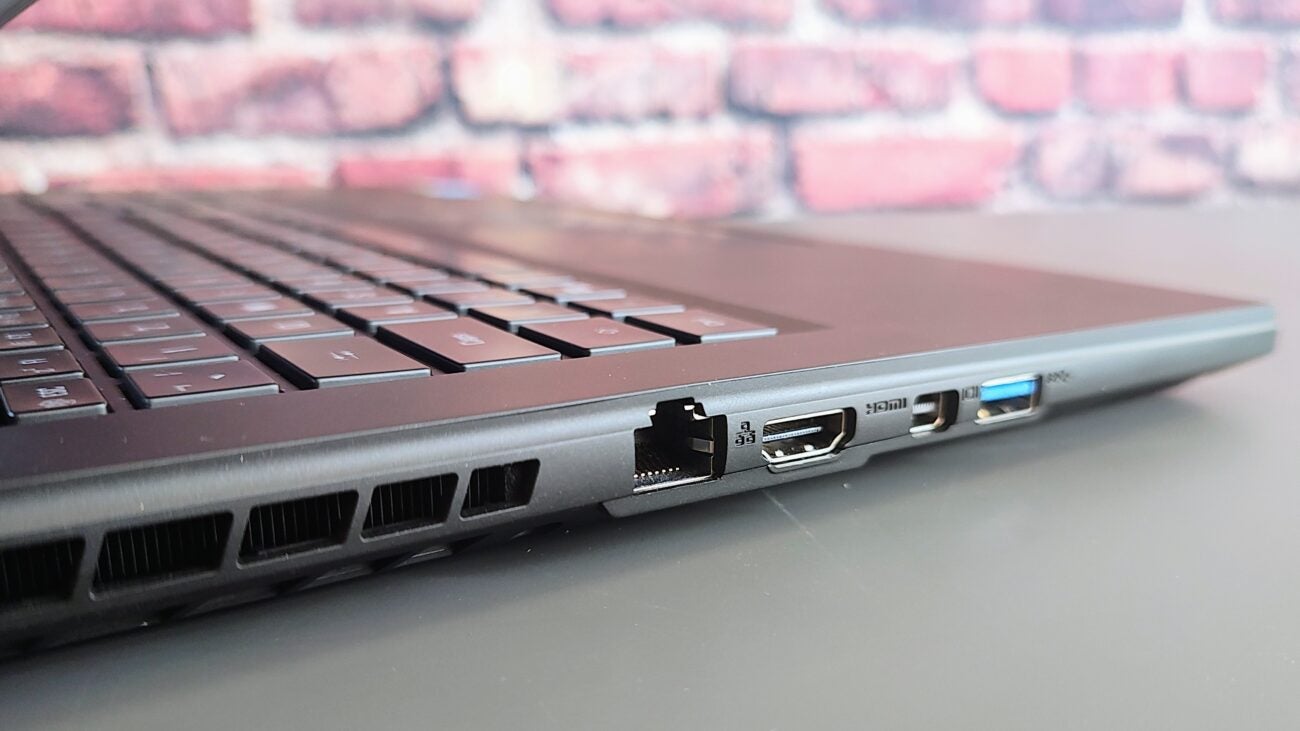
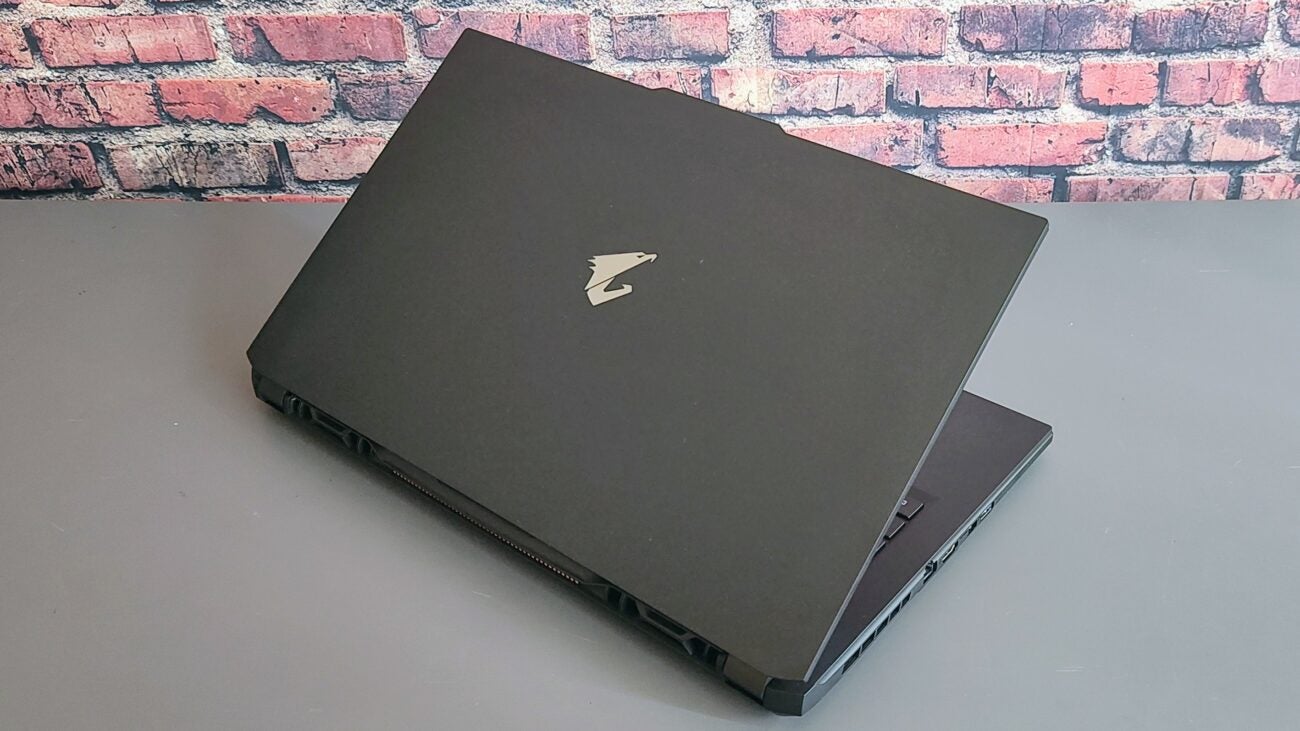
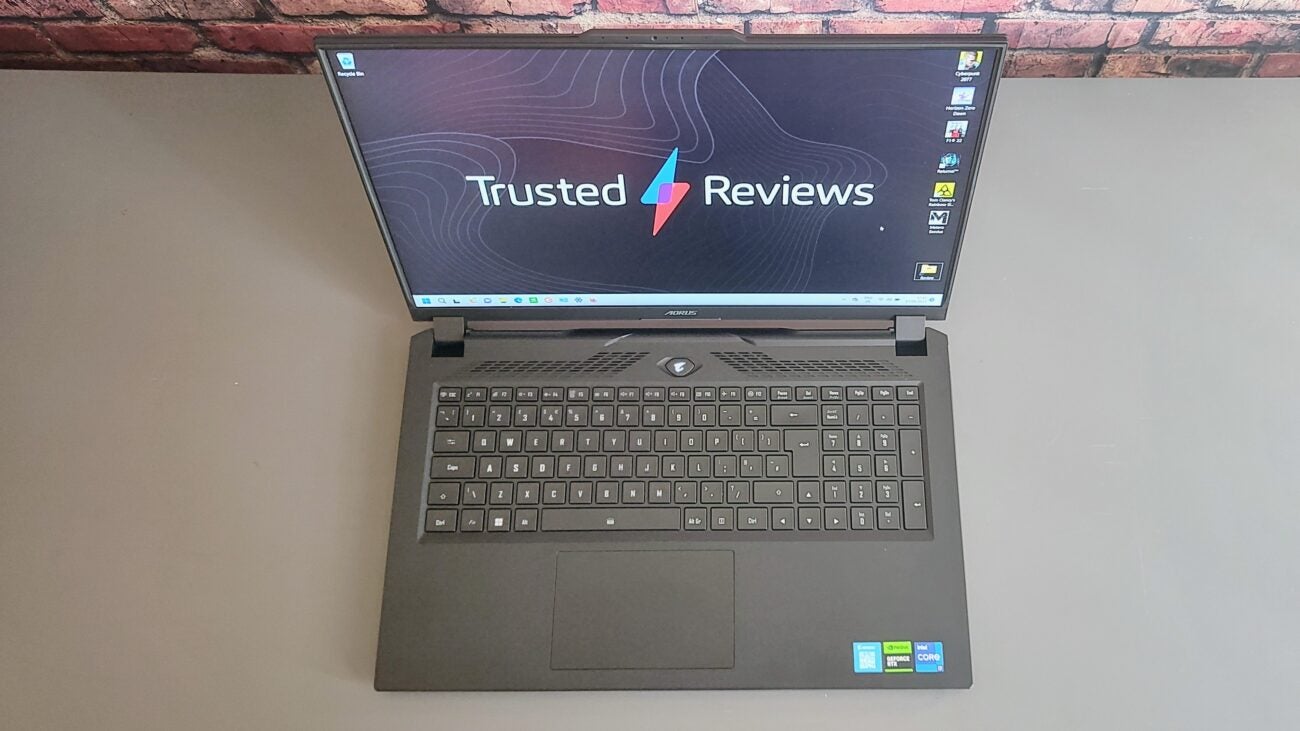

Verdict
The Gigabyte Aorus 17H isn’t perfect, but no other laptop for this sort of money can run games at the same high frame rates thanks to a potent GPU, super-fast display and surprisingly low asking price.
Pros
- Fast Full HD gaming
- Good value for an RTX 4080 machine
- Battery life good for a gaming laptop
Cons
- Keyboard backlight only illuminates main graphics
- I/O ports not ideally placed
Key Features
- Fast Full HD displayThe 17.3-inch 360Hz 1,920 x 1,080 display is ideal for eSports
- Large batteryAt 99Wh, you won’t find a larger battery on mainstream laptops
- Windows Hello Facial RecognitionBiometric security is scarce on gaming laptops but you’ll find it here
Introduction
Fast and cheap. That’s what I want from a gaming laptop. And by fast, I don’t mean theoretically fast, I mean visually fast. Having a fire-breathing GPU that can run a game at 300+ fps is pointless if you only have a 165Hz display. That’s what the Aorus 17H is designed to do.
With an Nvidia RTX 4080 GPU, a 360Hz display, and a price tag of only a little above £2,000, no other laptop comes close to offering this level of specification for so little money.
Of course, getting the cost down can sometimes result in unacceptable compromises elsewhere in a product, so has Gigabyte managed to punt the Aorus 17H into the Goldilocks zone for powerful large-screen gaming laptops?
Design and Keyboard
- The body is made of plastic but is still solid
- I/O ports are too near the front
- Solid keyboard with patchy backlight
Gigabyte’s Aorus machines have traditionally been chunky black angular affairs, and the 2023 Aorus 17H is no exception. Unlike the more expensive metal Aorus 17X, the 17H is a largely plastic affair, but it is none the worse for that and feels solid and rigid with little flex to be felt in the lid unless you twist it brutally.
Gaming laptops with 17.3-inch screens are never small or light affairs, but at 398 x 258 x 30mm and 2.7Kg it’s noticeably shallower and lighter than the Asus ROG Strix Scar 17.
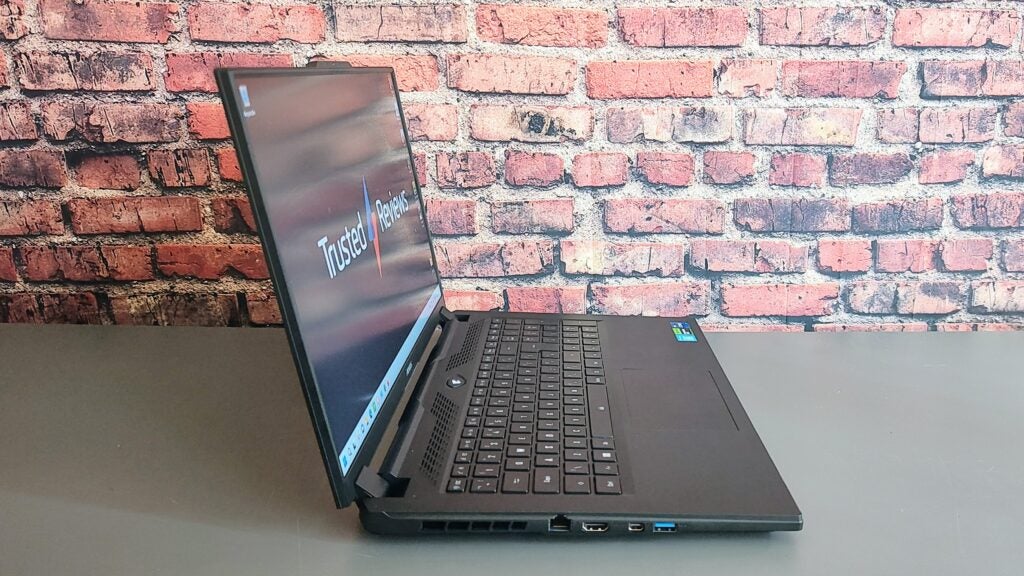
The keyboard is a conventional chiclet affair with very little in the way of design optimisations for gamers other than Fn shortcuts to change the fan speed and “AI Boost” performance manager, but it’s impressively solid and features per-key RGB lighting. There is one bizarre feature to it, though.
The backlight only illuminates the primary graphic on each keycap, so the icons relating to any Shift or Fn functions are left completely dark. This makes performing tasks like changing the volume, the display brightness, or the fan speed in low light a hit-and-miss affair unless you can recall which FN keys do what.
Given the amount of free space surrounding it, the 120 x 75mm trackpad could and should be bigger, but it works reliably, and the click-action is perfectly weighted, positive and quiet.
All the I/O ports are on the sides of the Aorus H17, and they are all placed towards the front of the chassis, which means you’ll have to tolerate a lot of cables and dongles sticking out of the laptop where you’d normally put your mouse.
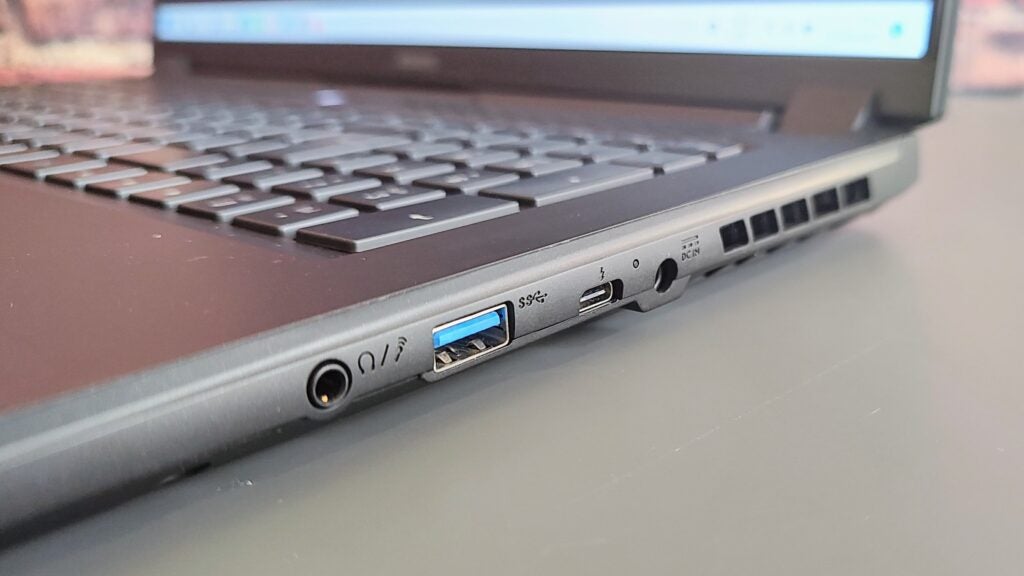
There is a decent selection, though: On the left, there is a 2.5G RJ-45 LAN port, HDMI 2.1 and Mini DisplayPort 1.4 video outputs and a USB-A 3.2 Gen 1 data port, while on the right, there’s a Thunderbolt 4 and a second USB-A 3.2 Gen 1 port, a 3.5mm audio jack and the DC-in socket. That last would be better tucked away at the back.
I’m not sure what the reasoning behind the Mini DP port is; a second Thunderbolt 4 or even a DP Type-C port would surely have been more versatile, and while the Thunderbolt port is credited as supporting PD charging, it didn’t want to play ball with my 65W charger though to be fair Gigabyte advises you only use a charger rated at 86W or above.
Getting the base panel off the Aorus 17H is the work or moments, as it should be with any serious gaming laptop. Once inside, you can easily access both SODIMM RAM mounts and the two 2280 PCIe 4 SSD bays. The battery looks like it will come out without undue drama, and there’s nothing to prevent you from blowing away dust from the two fans.
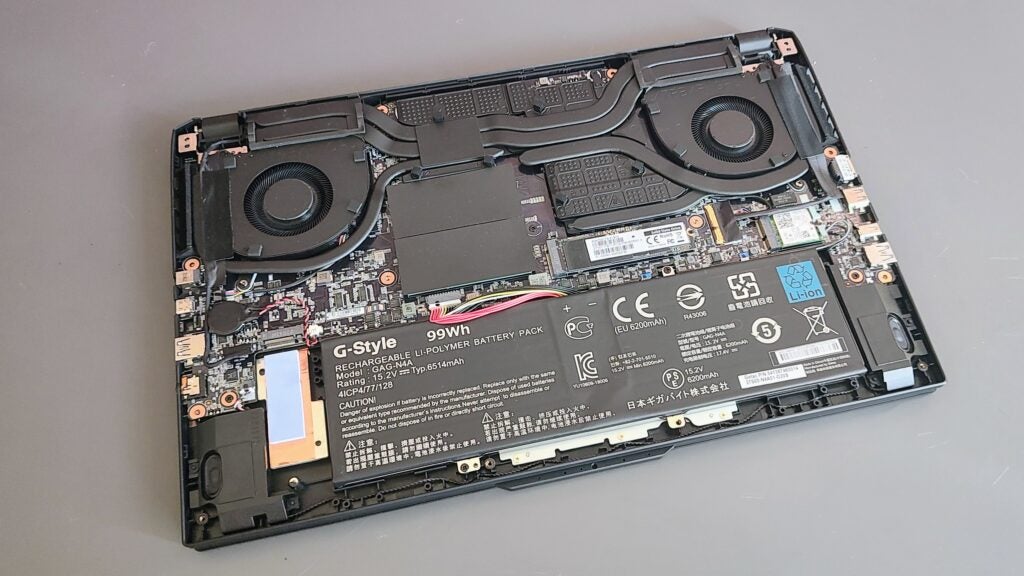
Inside the shipping carton, you’ll find a large styrofoam inlay that protects the Aorus while in transit but does little for the environment because it’s not that easy to recycle.
Display and Sound
- Excellent motion handling
- The screen is colourful and colour-accurate
- The speaker system is lacklustre
The Aorus H17 uses a Sharp-made 1,920 x 1,080 IPS display with a pixel density of 127dpi. That’s not a particularly high number for a £2,000 laptop, but it is the unavoidable side effect of a Full HD 17.3-inch panel. Compared to a 2,560 x 1,440 17.3-inch screen with 170dpi, you can detect some pixelation with the naked eye when you look carefully.
However, while most QHD panels max out at 240Hz, the Aorus 17’s screen can refresh at 360Hz, which can make quite a difference if you play eSports titles like Apex Legends or Valorant, where every millisecond counts. The Aorus H17’s screen also delivers for those of us who are not quite as hard-core because motion handling is superb across the board, with virtually no ghosting or smearing in evidence.
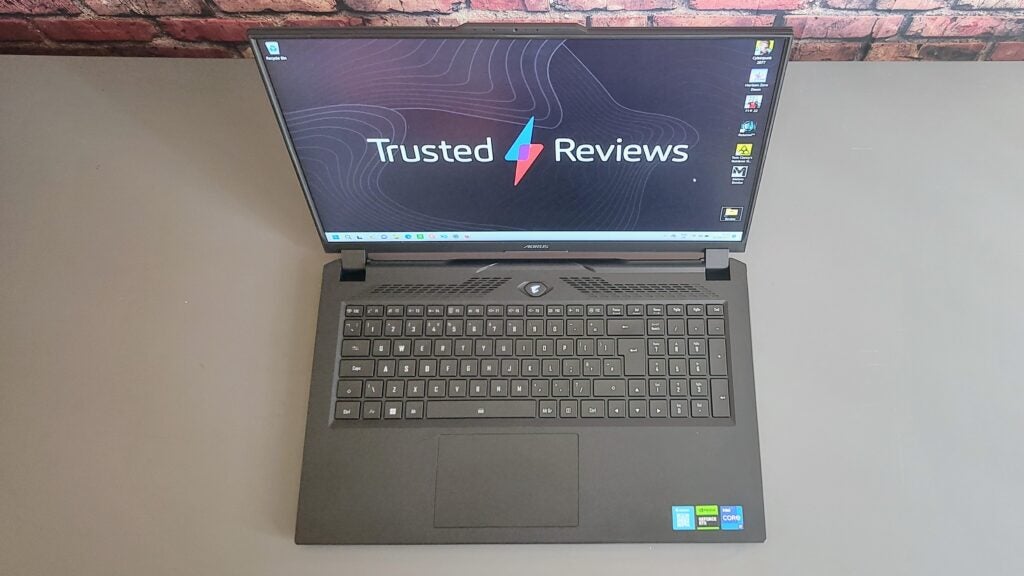
The display has the basics well covered: Peak brightness is good at 351 nits, and there’s plenty of colour on hand with 97.9% sRGB gamut coverage (the figures for DCI-P3 and Adobe RGB came in at 72.3% and 69.9%, respectively). The contrast ratio was a solid 1214:1, while the Delta E colour accuracy against the sRGB profile was a very impressive 1.36.
There has been some confusion regarding the Aorus 17H featuring Nvidia’s Advanced Optimus and G-Sync technology. My review sample had neither, just a traditional MUX switch that requires a reboot to engage or disengage. In my opinion, the absence of adaptive sync is not that big of an issue on a laptop with a 360Hz display and a powerful GPU. The only time I noticed any screen tearing was when I pegged games to 60fps to look for it deliberately.
The brace of 2.5W stereo speakers rather let the side down. Not only are they not particularly loud, developing 75.1dB(A) as measured against a pink noise source, but the sound is somewhat raucous and could do with more bass to underpin proceedings. They do a decent enough job for gaming, but listening to music on the Aorus 17H is a rather tiresome experience.
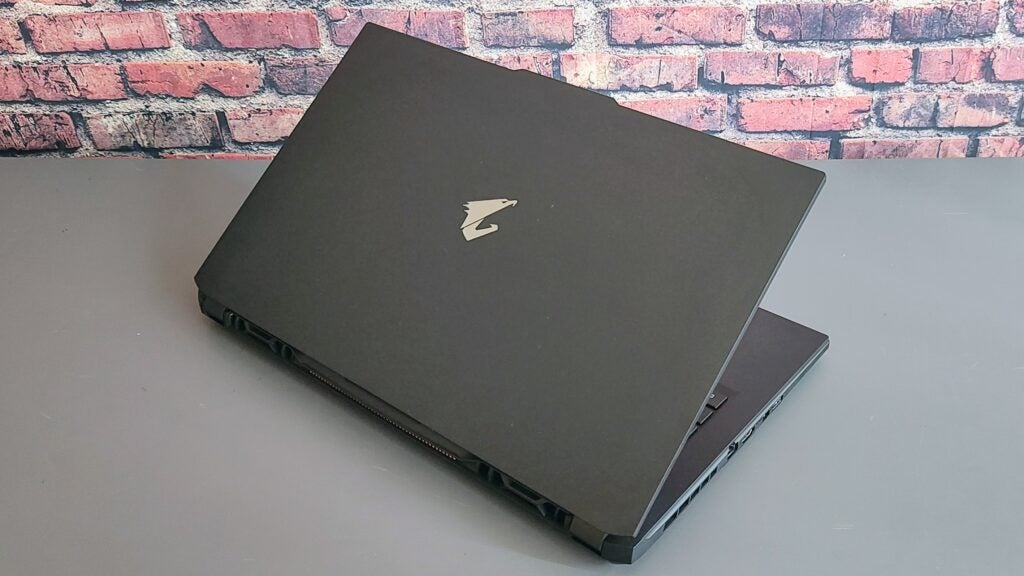
The 720p webcam is a lacklustre affair, dull, grainy and colourless, but it supports Windows Hello IR facial recognition, so I’ll forgive the two-bob image quality.
Performance
- Storming Full HD gaming performance
- Surprisingly cool and quiet under stress
- Fast 1TB SSD
Like most laptops built around the 150W TGP RTX 4080 GPU, the Aorus 17H can easily handle even the most demanding games. This review model offered the aforementioned GPU, Intel Core i7-13700H CPU, 1TB SSD and 16GB RAM. Running at the highest settings but without ray tracing, the Aorus 17H averaged 114.2fps in Cyberpunk 2077 and 101fps in Returnal, while the Metro Exodus Enhanced Edition benchmark ran at 64.1fps with ray tracing set to extreme.
Good though those Triple-A scores are, it’s in eSports that the Aorus 17H really shines. With all the detail settings at high, Apex Legends ran at 240fps, but a quick fiddle in the graphics soon boosted that to the 300fps maximum. Overwatch 2, meanwhile, ran at a consistent 360fps from the get-go.
CPU performance is rather less impressive because the i7-13700 processor inside the Aorus 17H is the 14-core H version rather than the 16-core HX found in the Medion Erazer Deputy P50, which has two extra Performance cores. The PCMark 10 score of 7,365 is still high enough to put the Aorus 17H into the top quintile of laptops.
The Aorus 17H does all this without much fuss. You can certainly hear the fans when they are running at full speed, but 54.2dB(A) is at the lower end of what you can expect from a powerful gaming laptop, and the keyboard deck never once got above 32°C, even after prolonged stress tests. The area around the side vents recorded a peak temperature of 50°C, indicating that the cooling system was doing its job efficiently.
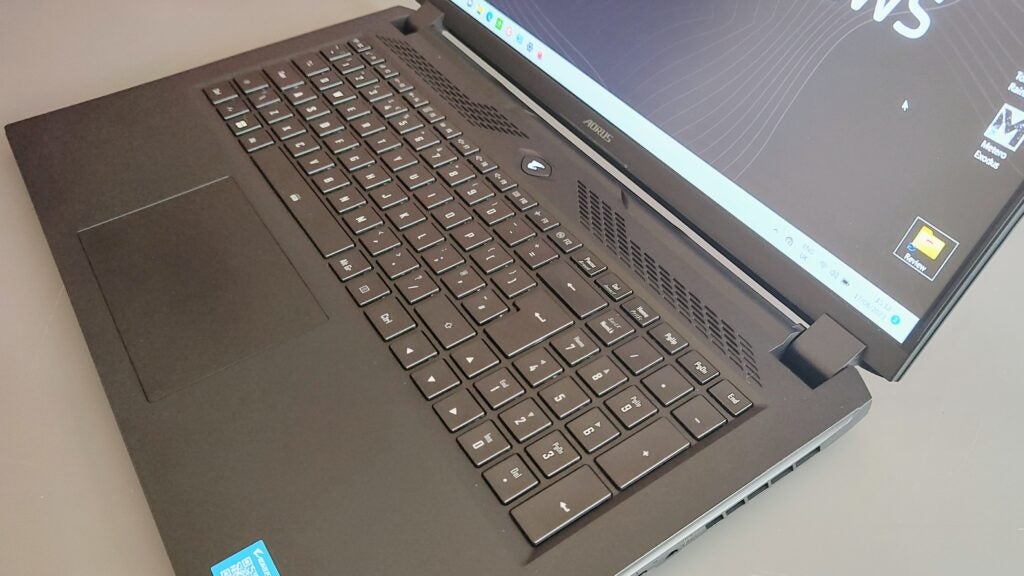
The 1TB SSD is my review machine, one of Gigabyte’s own make, had its running shoes on returning sequential read and write speeds of 7,018MBs and 4,955MB/s, respectively, which is perfect for shunting large games around.
Software
- Useful Gigabyte Control Panel
- Audio apps onboard
The Gigabyte Control Panel provides comprehensive access to the Aorus 17H’s performance settings, including manual fan control, as well as the likes of the MUX switch and keyboard backlight manager. It’s a rather clunky and ugly piece of software, though, and unlikely to keep the designers of Asus’s Armory Crate or Acer’s Nitro Sense CPs awake at night.
DTS provides two audio control panels (Sound Unbound and Ultra:X), and there is a Dolby Atmos app, but you need to cough up £14.24 to access the headphones’ functionality. That’s it for non-Microsoft software. There isn’t even a pesky anti-virus suite badgering me to take up a subscription though I can’t guarantee that a previous reviewer hadn’t deleted it after one too many pop-ups pushed them over the edge.
Battery Life
- 99Whr is the most you can legally fit in a laptop
- 5 hours 42 minutes in the PCMark10 Office test
You can’t fit a higher-capacity battery in a laptop than 99Wh. You can, but the US government won’t let you take it on a plane. Running the PCMark 10 Office battery test, the Aorus 17H ran for almost five and three-quarter hours, which is good for a barnstorming gaming laptop. Use it carefully, and you can eke out 6 hours from a charge.
Latest deals
Should you buy it?
If you want high speed for eSports
The Aorus 17H excels at games like Apex Legends, Valorant and Overwatch 2 when the 360Hz refresh rate gives you an edge in the heat of battle. Even really demanding Triple-A games like Metro Exodus and Cyberpunk 2077 run at over 60fps, and you can’t realistically ask for more from a laptop.
If you want a screen that looks super-sharp closeup
The combination of a 17.3-inch display and a resolution of 1,920 x 1,080 is never going to be a recipe for a super-sharp display, so the Aorus 17H’s screen just is not as crisp as the same-size 2,560 x 1,440 panel fitted to the Asus ROG Strix Scar 17.
Final Thoughts
The Aorus 17H knows exactly why it’s been put on this earth: to play FullHD games as fast as possible while still being reasonably priced. It’s an ambition the Aorus 17H fulfils to a tee, so if you want a laptop for serious eSports, this is undoubtedly where you should spend your money.
As for competition, you can get an Alienware m18 with a 470Hz refresh rate but go for the RTX 4080 model, and you will be spending £2,729 and have an even lower (125dpi) pixel density thanks to the 1,920 x 1,200 18-inch panel. The Strix Scar 17 from Asus ROG features a QHD display, an RTX 4090 GPU and AMD’s latest Dragon Range CPU and can play games at QHD as fast as the Aorus 17H can play them at FullHD, but it is considerably more expensive, and the display tops out at just 240Hz.
The Aorus 17H would be more rounded packaged if the speakers were better and if it had Advanced Optimus, but the former is easily remedied with a headset, something most serious gamers will regard as de rigueur, while the latter only adds a little operational convenience and would presumably involve the extra cost of an Nvidia licence.
How we test
Every laptop we review goes through a series of uniform checks designed to gauge key things, including build quality, performance, screen quality and battery life.
These include formal synthetic benchmarks and scripted tests, plus a series of real-world checks, such as how well it runs popular apps.
We use review machines as our main laptop for at least a week.
We test the performance via both benchmark tests and real-world use.
We test the screen with a colorimeter and real-world use.
We test the battery with a benchmark test and real-world use.
FAQs
Yes, but it’s a traditional multiplexer switch that is activated from the Gigabtye control panel and requires a reboot of Windows to switch on or off. It does not feature Nvidia’s automatic MUX switching system Advanced Optimus.
No. Aorus is essentially the premium brand from Gigabyte and is reserved for its high specification and, thus, more expensive laptops, desktops and components.


